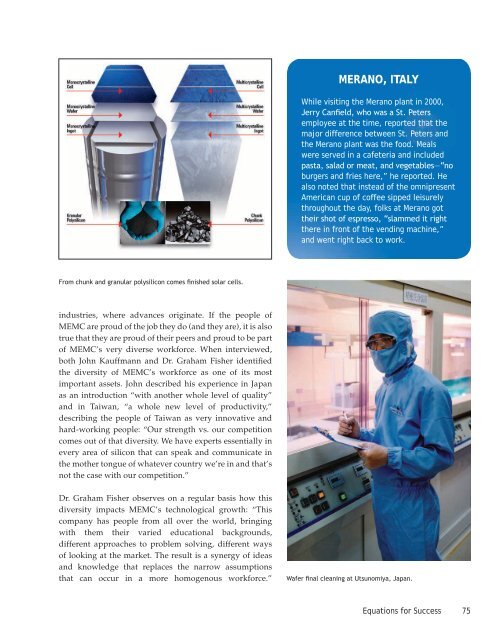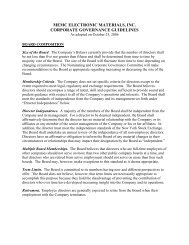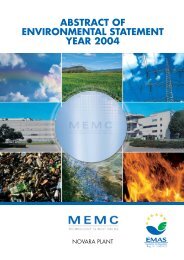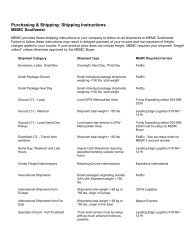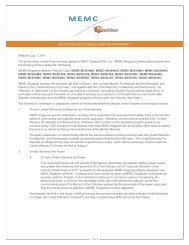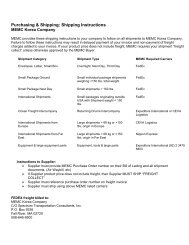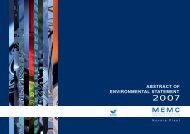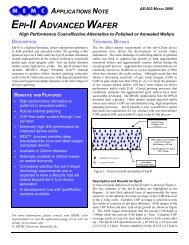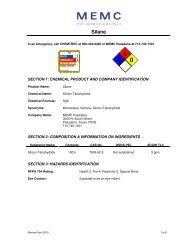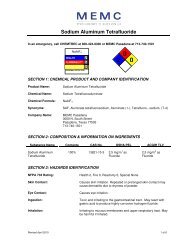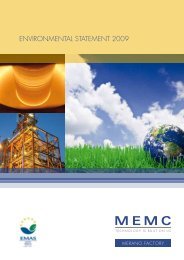BUILDING ON THE PAST, READY FOR THE FUTURE: - MEMC
BUILDING ON THE PAST, READY FOR THE FUTURE: - MEMC
BUILDING ON THE PAST, READY FOR THE FUTURE: - MEMC
You also want an ePaper? Increase the reach of your titles
YUMPU automatically turns print PDFs into web optimized ePapers that Google loves.
From chunk and granular polysilicon comes finished solar cells.<br />
industries, where advances originate. If the people of<br />
<strong>MEMC</strong> are proud of the job they do (and they are), it is also<br />
true that they are proud of their peers and proud to be part<br />
of <strong>MEMC</strong>’s very diverse workforce. When interviewed,<br />
both John Kauffmann and Dr. Graham Fisher identified<br />
the diversity of <strong>MEMC</strong>’s workforce as one of its most<br />
important assets. John described his experience in Japan<br />
as an introduction “with another whole level of quality”<br />
and in Taiwan, “a whole new level of productivity,”<br />
describing the people of Taiwan as very innovative and<br />
hard-working people: “Our strength vs. our competition<br />
comes out of that diversity. We have experts essentially in<br />
every area of silicon that can speak and communicate in<br />
the mother tongue of whatever country we’re in and that’s<br />
not the case with our competition.”<br />
Dr. Graham Fisher observes on a regular basis how this<br />
diversity impacts <strong>MEMC</strong>’s technological growth: “This<br />
company has people from all over the world, bringing<br />
with them their varied educational backgrounds,<br />
different approaches to problem solving, different ways<br />
of looking at the market. The result is a synergy of ideas<br />
and knowledge that replaces the narrow assumptions<br />
that can occur in a more homogenous workforce.”<br />
MerAno, iTAly<br />
while visiting the Merano plant in 2000,<br />
Jerry Canfield, who was a St. Peters<br />
employee at the time, reported that the<br />
major difference between St. Peters and<br />
the Merano plant was the food. Meals<br />
were served in a cafeteria and included<br />
pasta, salad or meat, and vegetables—“no<br />
burgers and fries here,” he reported. He<br />
also noted that instead of the omnipresent<br />
American cup of coffee sipped leisurely<br />
throughout the day, folks at Merano got<br />
their shot of espresso, “slammed it right<br />
there in front of the vending machine,”<br />
and went right back to work.<br />
Wafer final cleaning at Utsunomiya, Japan.<br />
Equations for Success 75


